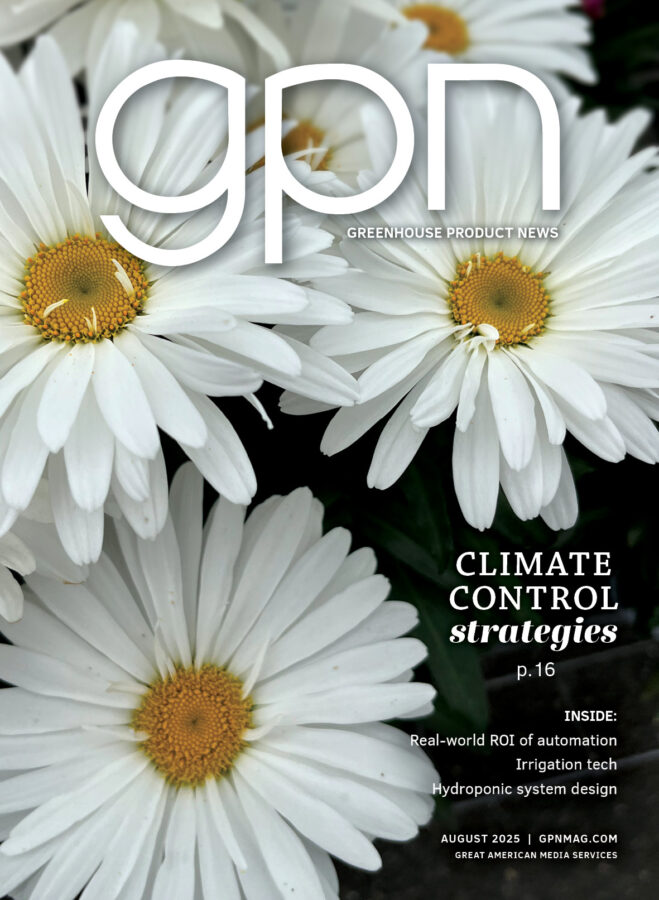An Unfamiliar Spring: Supply Chain Disruption and Grower Creativity
Editor’s note: This article was submitted on March 25 as the COVID-19 emergency was unfolding and warning of possible disruption of the food and crop supply chain first appeared.
Most of this nation’s ornamental crop growers, both greenhouse and outdoor nursery producers, rely on the spring season to generate the majority of their annual sales. This roughly 10-week window of opportunity is a high-stakes challenge of navigating the weather, the economy and unpredictable consumer mindset.
LOCALLY GROWN CHANNELS
The locally grown food movement includes traditional field farmers, greenhouse growers and a fairly new production sector, vertical farm operators. One attractive characteristic of this sector is its decentralizing effect on food production. The return of a slice of the agriculture industry closer to population centers in the form of small farms is healthy for local economies.
These three types of farmers participate in non-mainstream distribution channels to generate additional margin compared to conventional wholesale options. From farm stands to farmers markets to community-supported agriculture (CSA) programs, local farmers benefit from positioning themselves closer to the consumer. A new generation of restaurant chefs is choosing to source its food locally creating another option for farmers. This channel is particularly effective as the restaurateur and farmer interact with each other and the community synergistically.
A WORST NIGHTMARE EVENT
In what now feels naïve and inconsequential, the challenges of weather, economy and consumer mindset cited above cannot compare to that of a health pandemic. The novel coronavirus emergency’s first warning that our nation’s food supply chain could be disrupted if farm workers became ill came in late March on the eve of the 2020 spring growing season.
Questions quickly arose regarding the spring rush. If government directives to stay at home and avoid groups of people extends into May or June or further into summer, how will growers get their food and flower products to consumers? Garden centers may not be allowed to operate, farmers’ markets may be shut down, and restaurants may remain closed to sit down meals.
REIMAGINING OUR CHALLENGE
Consumer demand can be fickle, but in mere weeks it’s changed at an unfathomable rate. Restaurants have closed, either temporarily or permanently. Institutions have closed. The remaining ones cater to sick and high-risk people, so they’ve locked down their supply chains, removing local purchases. While these opportunities have disappeared, direct to consumer options are exploding.
One option for local farmers is to insert themselves into the existing wholesale supply chain. This works theoretically; however, mega retailers have shaped their channels over decades for efficiency through centralization. They may not have the flexibility to switch to decentralized local channels. They work with a few suppliers, not hundreds of small farms.
One way to break into this market is by working with a consolidator, a produce distributor, or a wholesaler that can purchase from several local farmers and deliver a large and consistent quantity of produce to retailers. The middleman gives small farmers access and also manages the relationship with the retailer, allowing the farmer to focus on growing produce.
So, what can growers and farmers do if their traditional channels of distribution are not there? Is it possible to take advantage of new direct-to-consumer channels? Certainly, pieces of a solution are in place. A little creativity may be all that’s needed.
REPURPOSING RESTAURANTS
Local farmers who have relationships with restaurants may be positioned to respond. At the time of this writing, restaurants were being allowed to serve take-out and deliver meals. If farmers are delivering produce to these establishments that are, in turn, touching consumers, might some fresh produce be channeled from farmer to consumer via the local restaurants? How about next week’s salad ingredients along with tonight’s take-out order? They have refrigeration capacity given the reduction in sit down traffic. They also have created the trust stated above in their collaborative community advertisement.
Some growers on the ornamental side of this discussion have invested in similar relationships with restaurants to supply fresh flowers for table centerpieces. It is a fact that flowers make people feel better. A health emergency requiring people to spend significantly more time isolated at home surely presents an opportunity to relieve a bit of stress. This could be a no-brainer. The grower and farmer win by getting product to consumers, the restaurant wins by creating an emergency income stream, and consumers win by receiving meals, fresh produce, and comforting flowers.
DELIVER
High-risk populations have wanted to avoid supermarkets and other public places, creating demand for delivery services. Some CSAs have already delivered. Right now, there is an explosion of new farm fresh delivery options across the United States looking to deliver fresh produce and staple products to people’s homes. Partnering with these groups provides farmers with new ways to sell their food.
CONCLUSIONS
This dramatic change in where people buy food is disrupting the agricultural supply chain. Once small/medium and local producers figure out how to navigate this new system, they should be able to thrive. After people get sick or a food safety outbreak, there is an uptick in local, natural and organic food purchases. Once the panic buying subsides, demand for local food should increase.
As we debate whether a centralized or non-centralized food supply chain serves citizens better, one of the arguments for decentralization that favors local production has now taken on a new level of meaning. Reducing the risk of large-scale human disease outbreaks transmitted on the food itself is an anchor point of the debate. A new concern, disease risk as it relates to farm workers falling ill en masse may become a concern for future consideration.









 Video Library
Video Library 


















